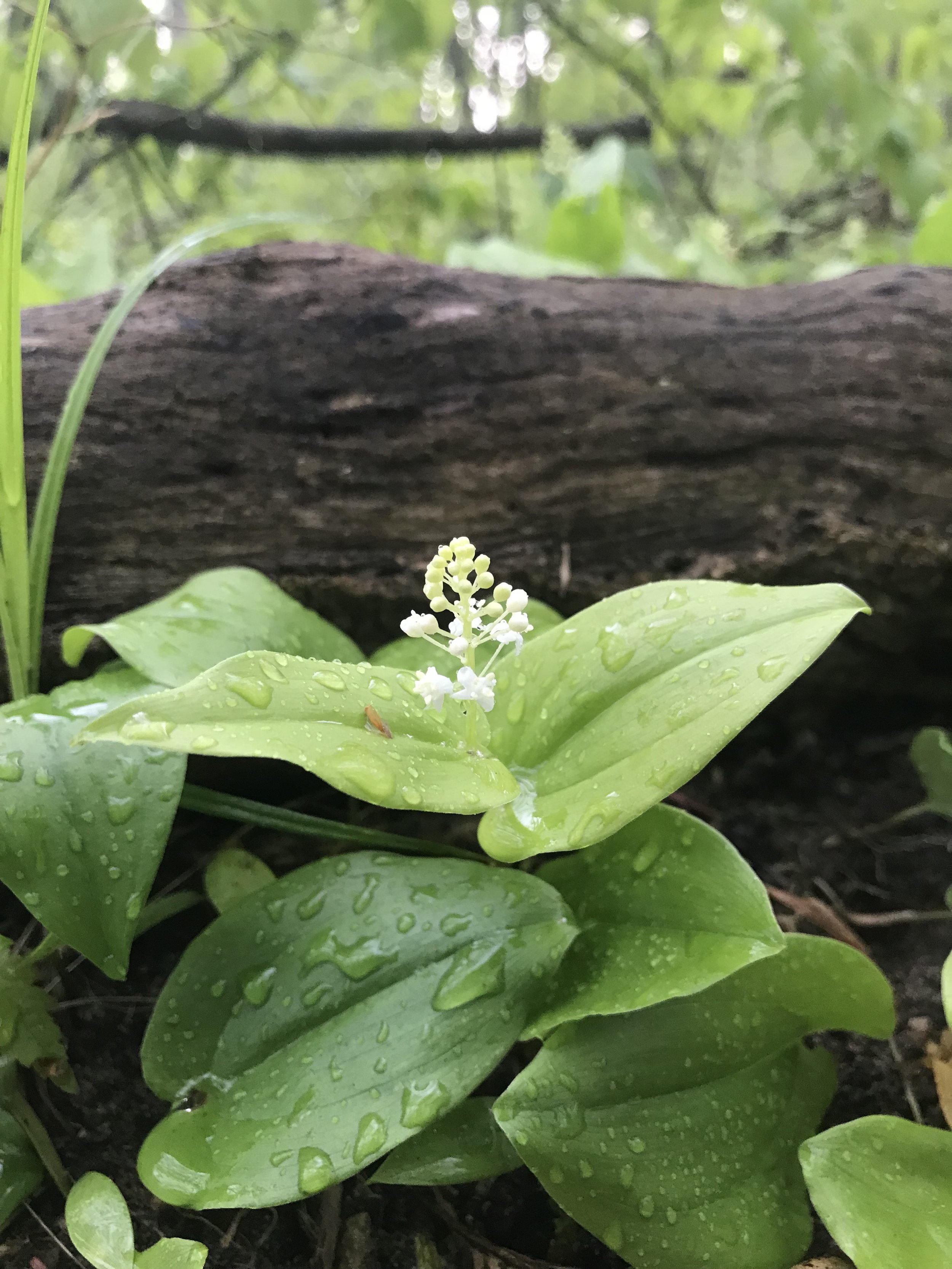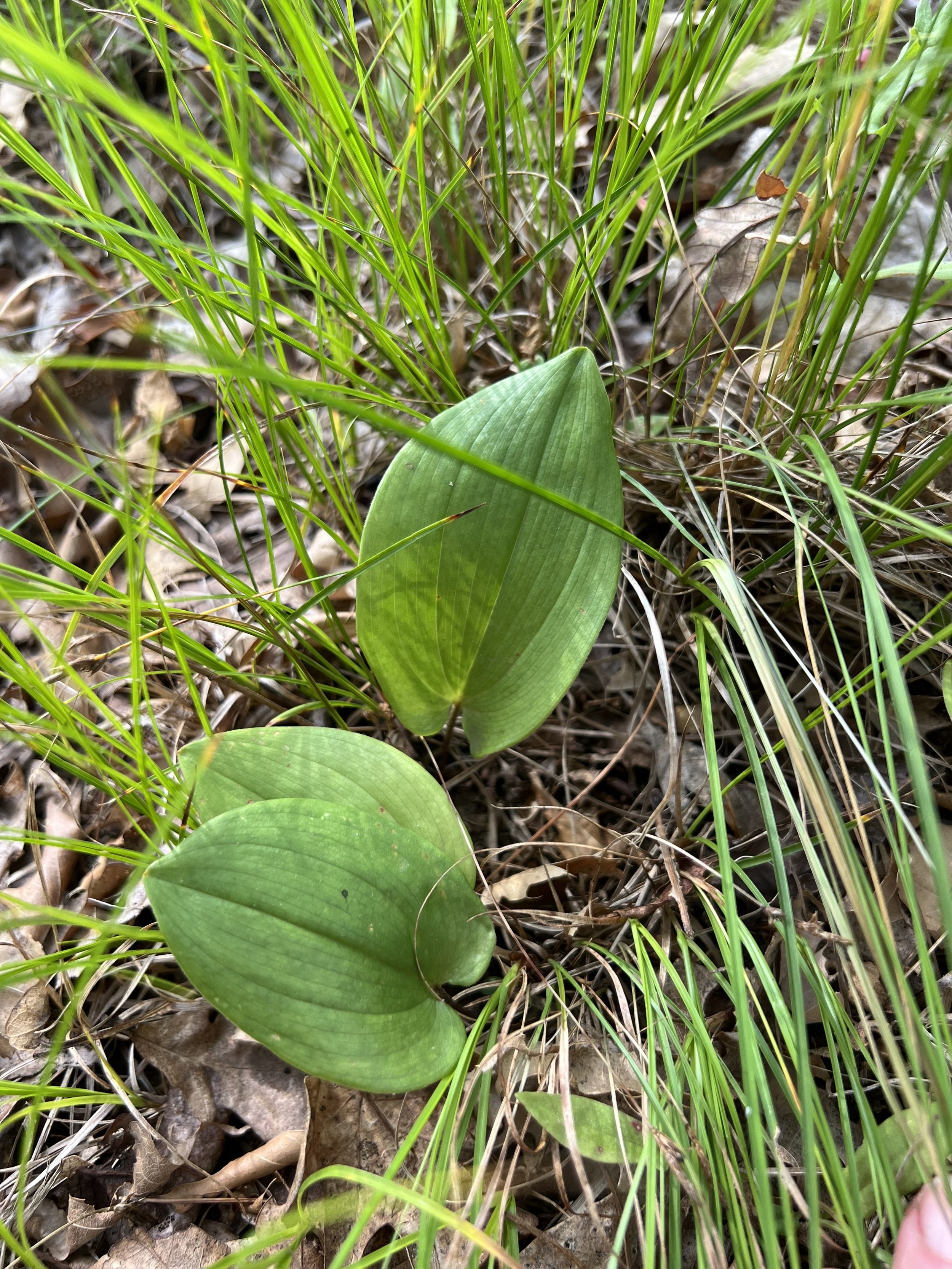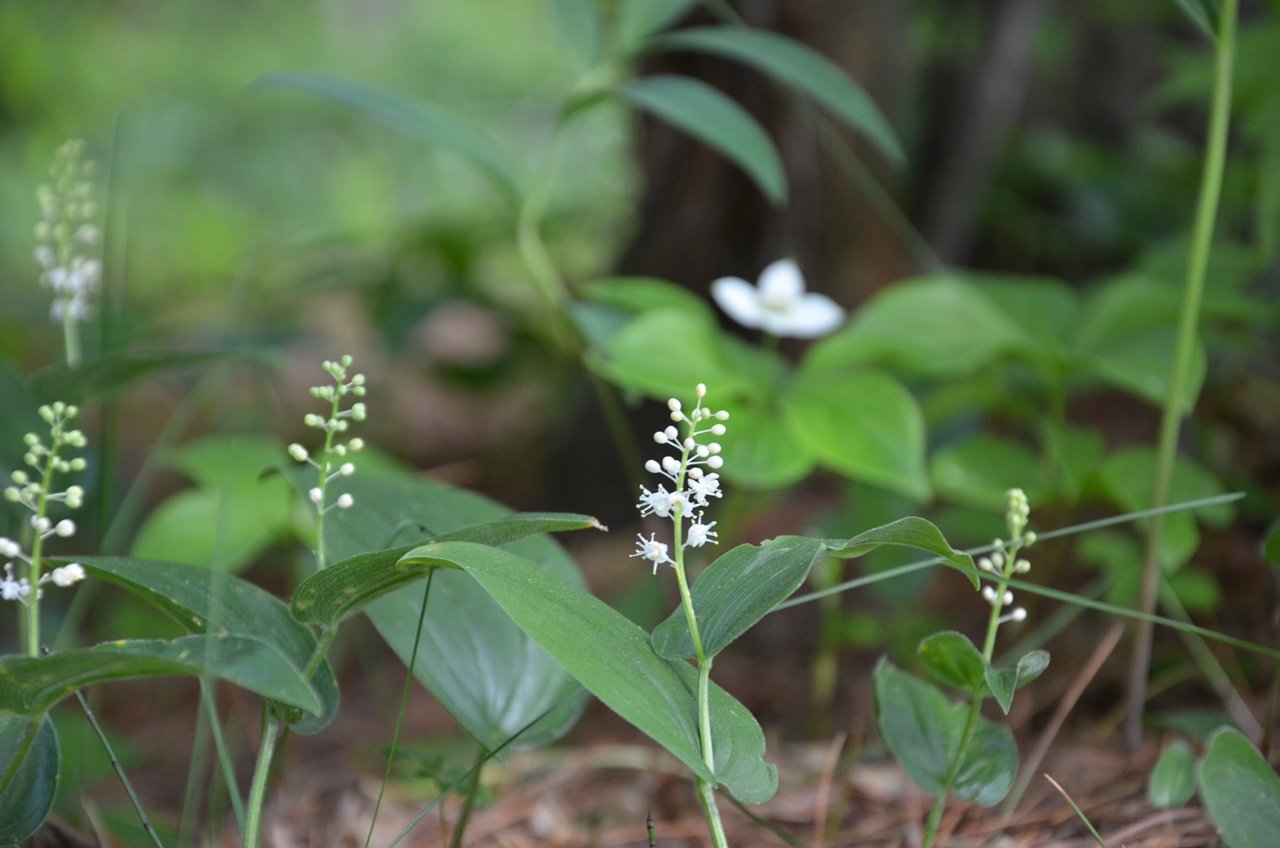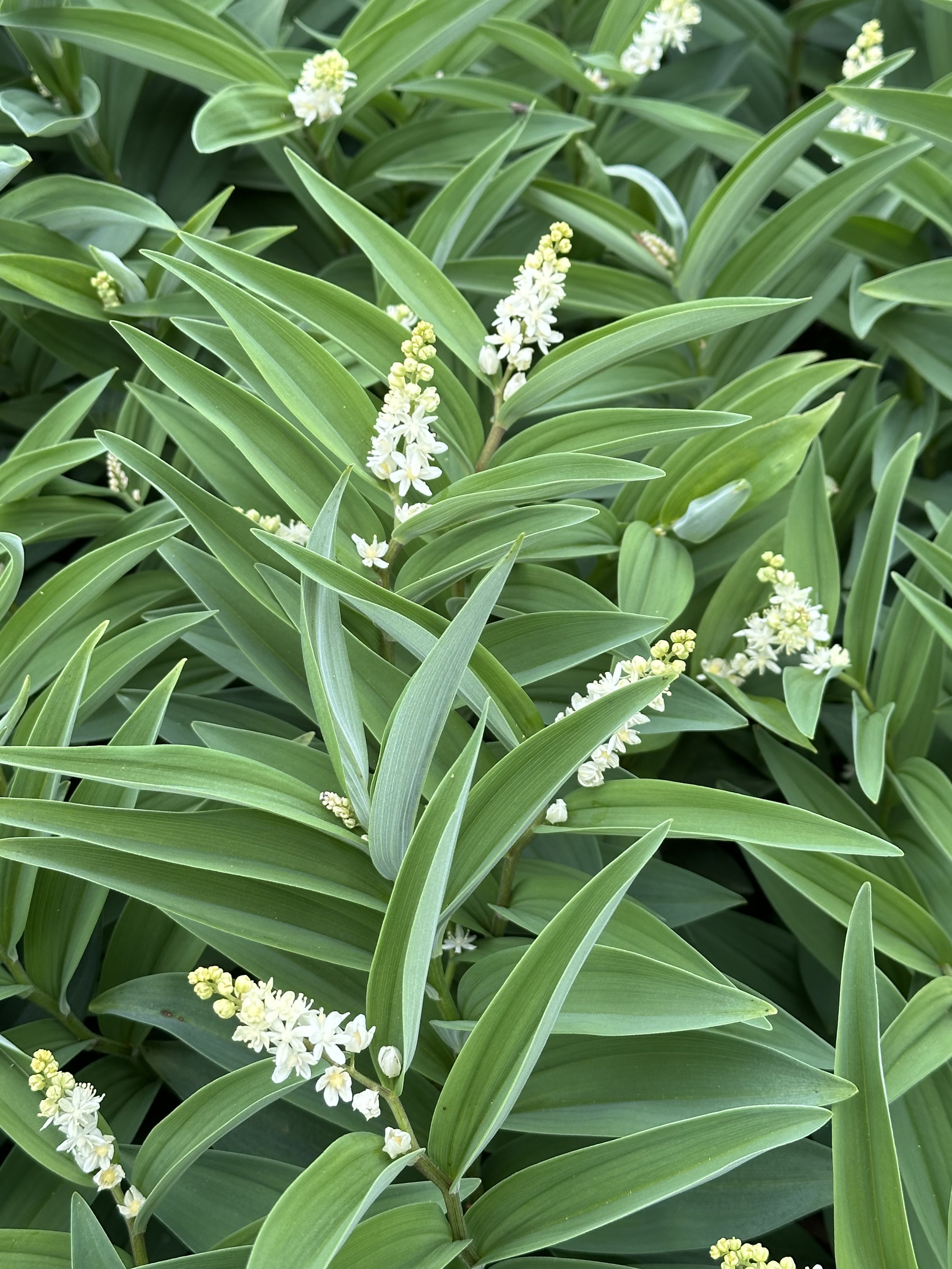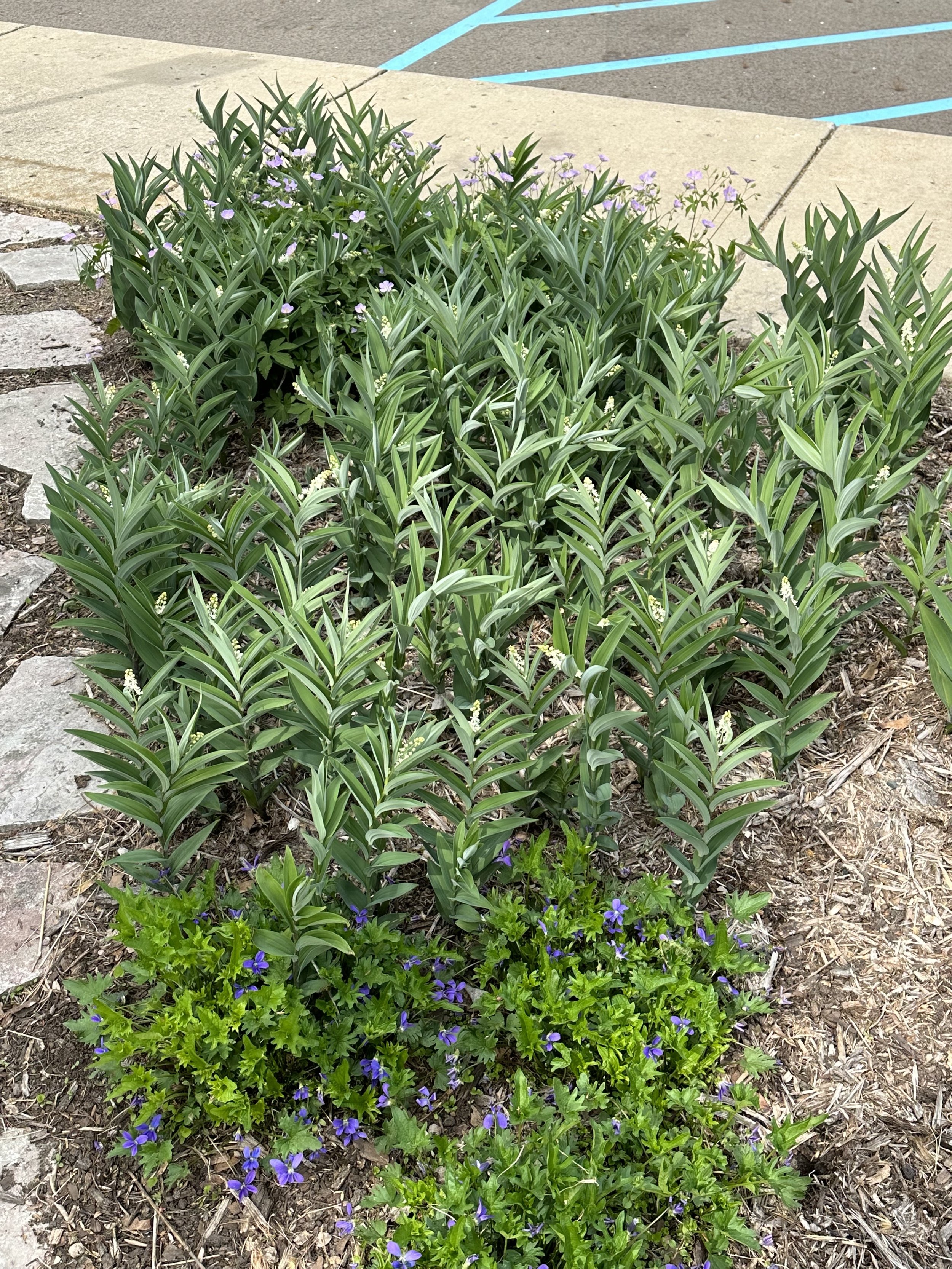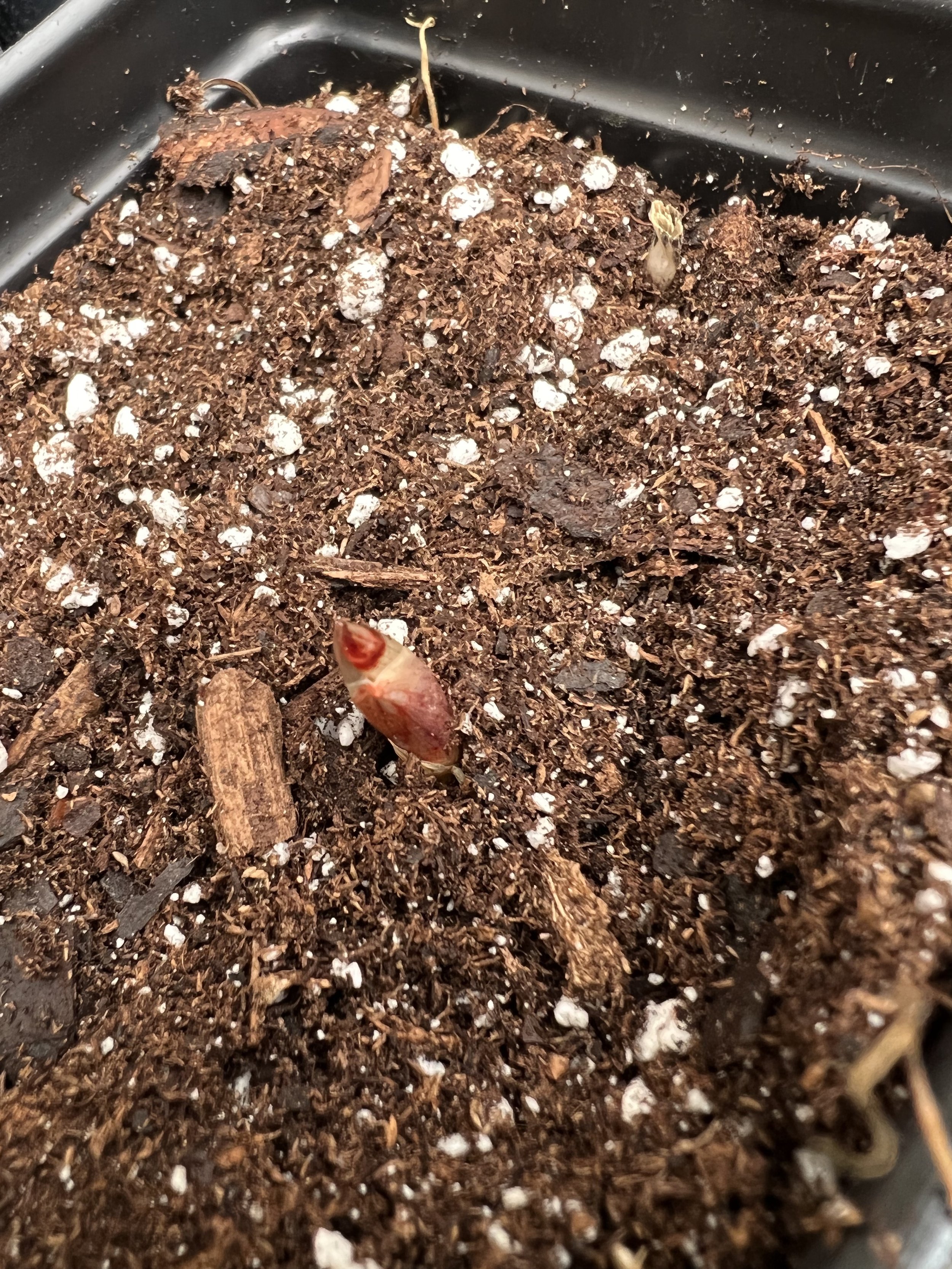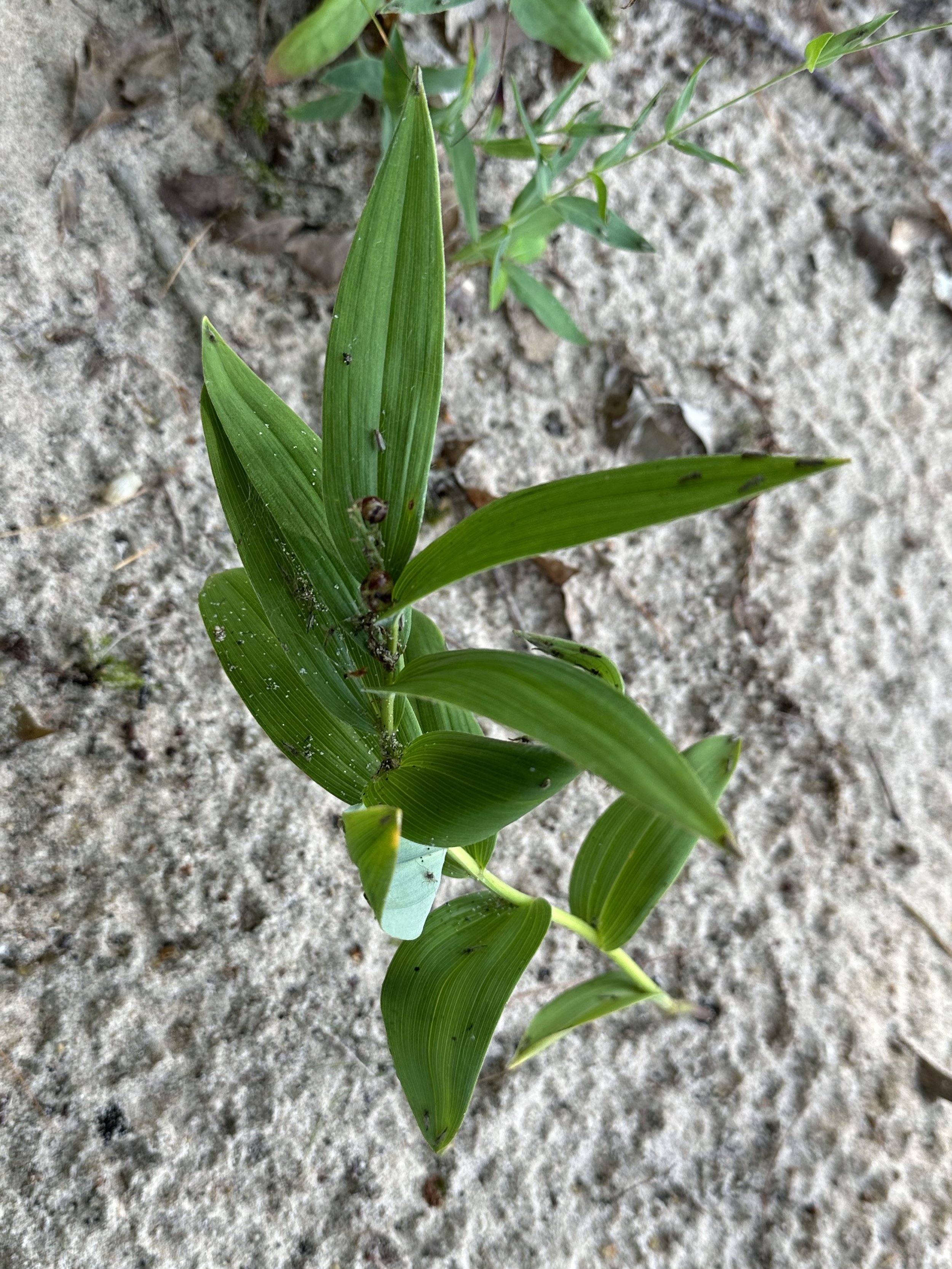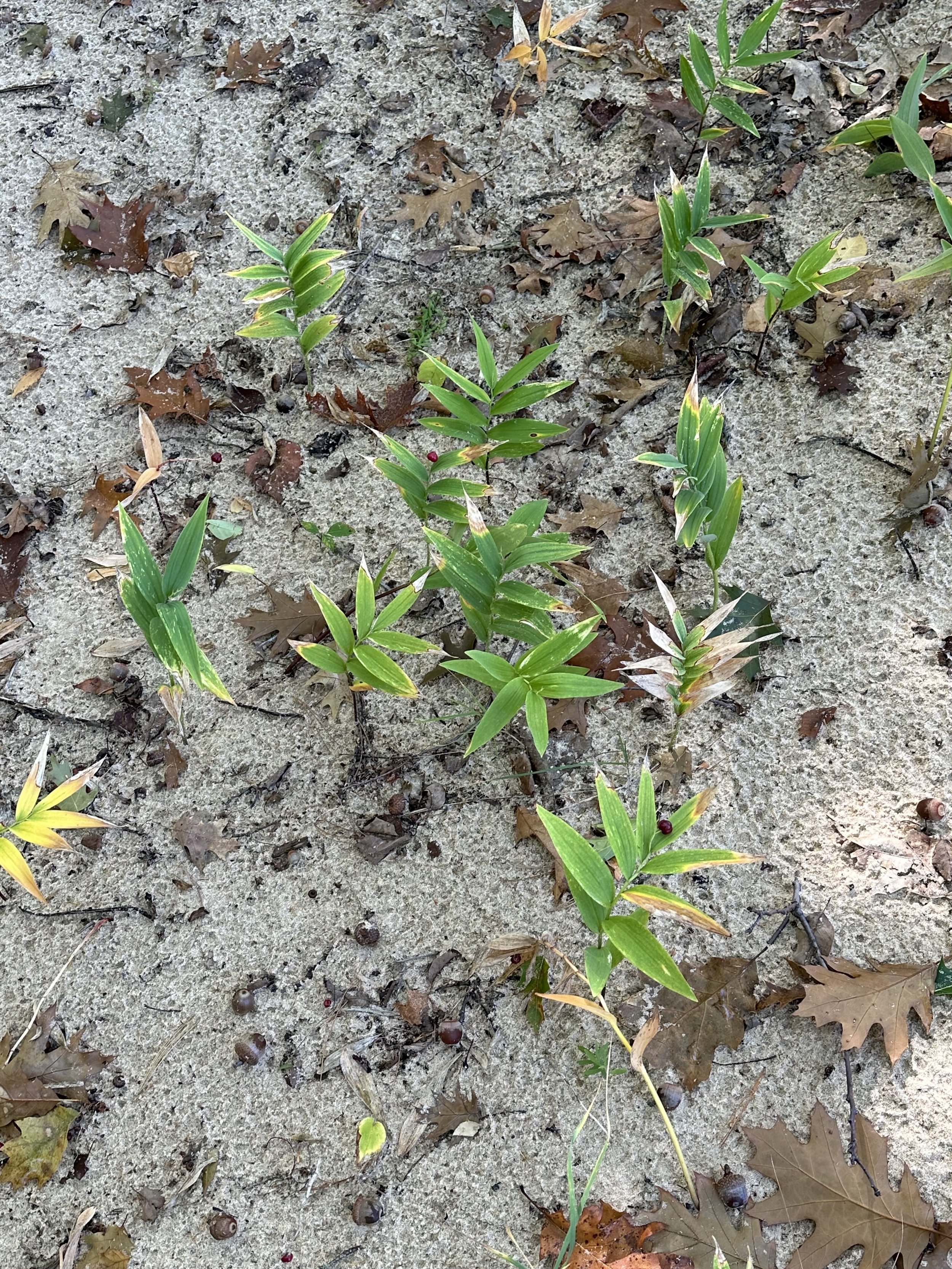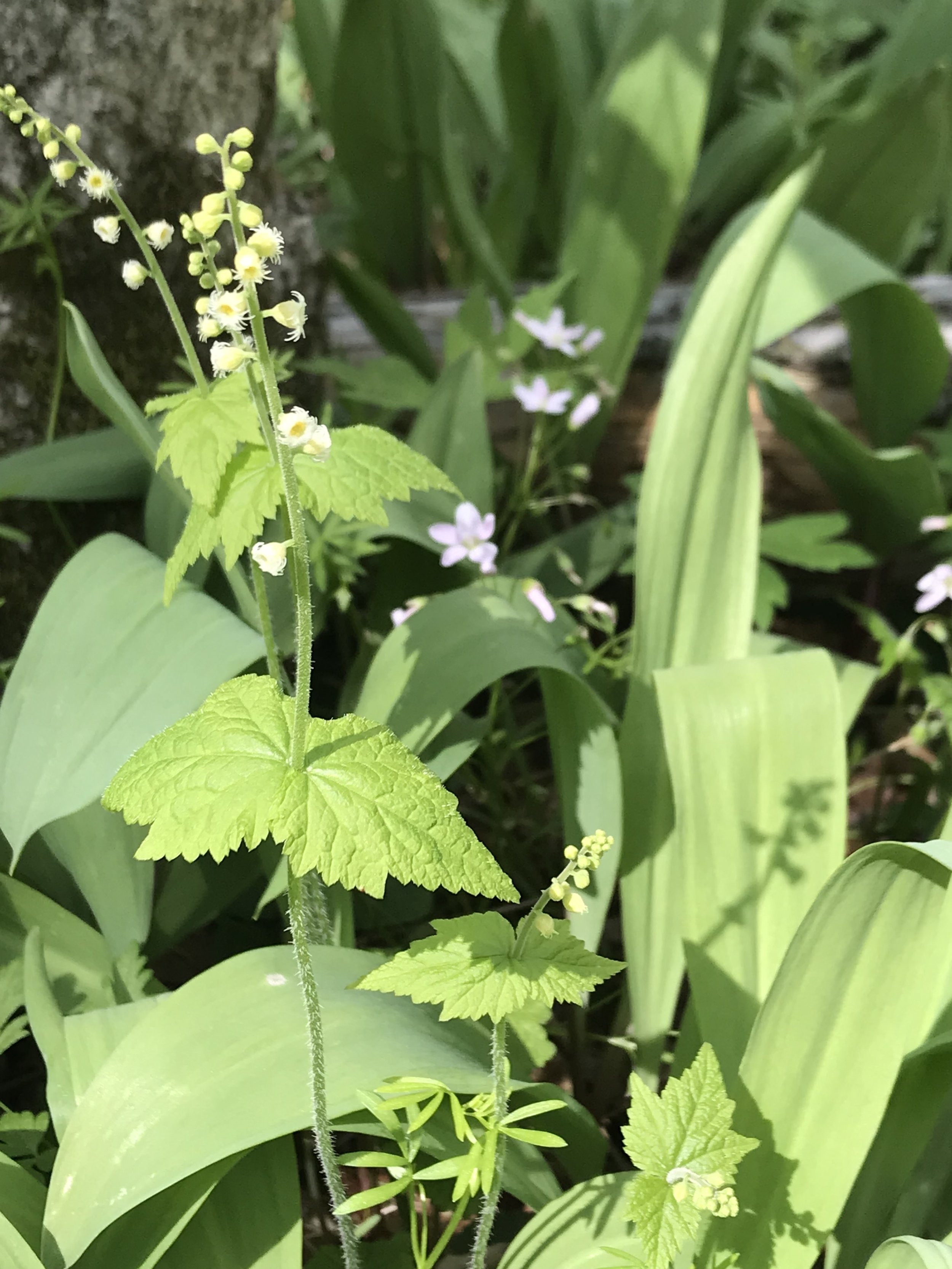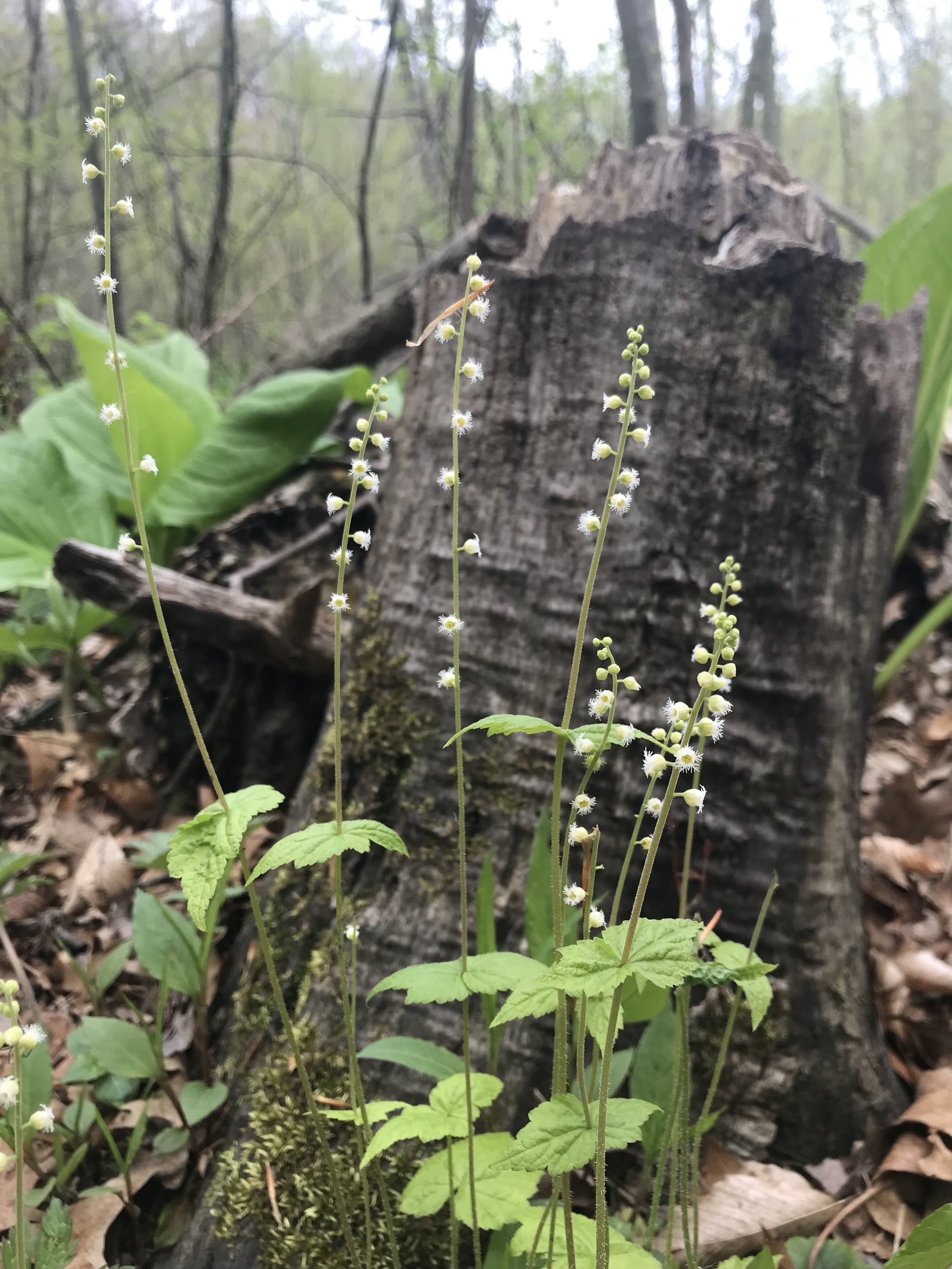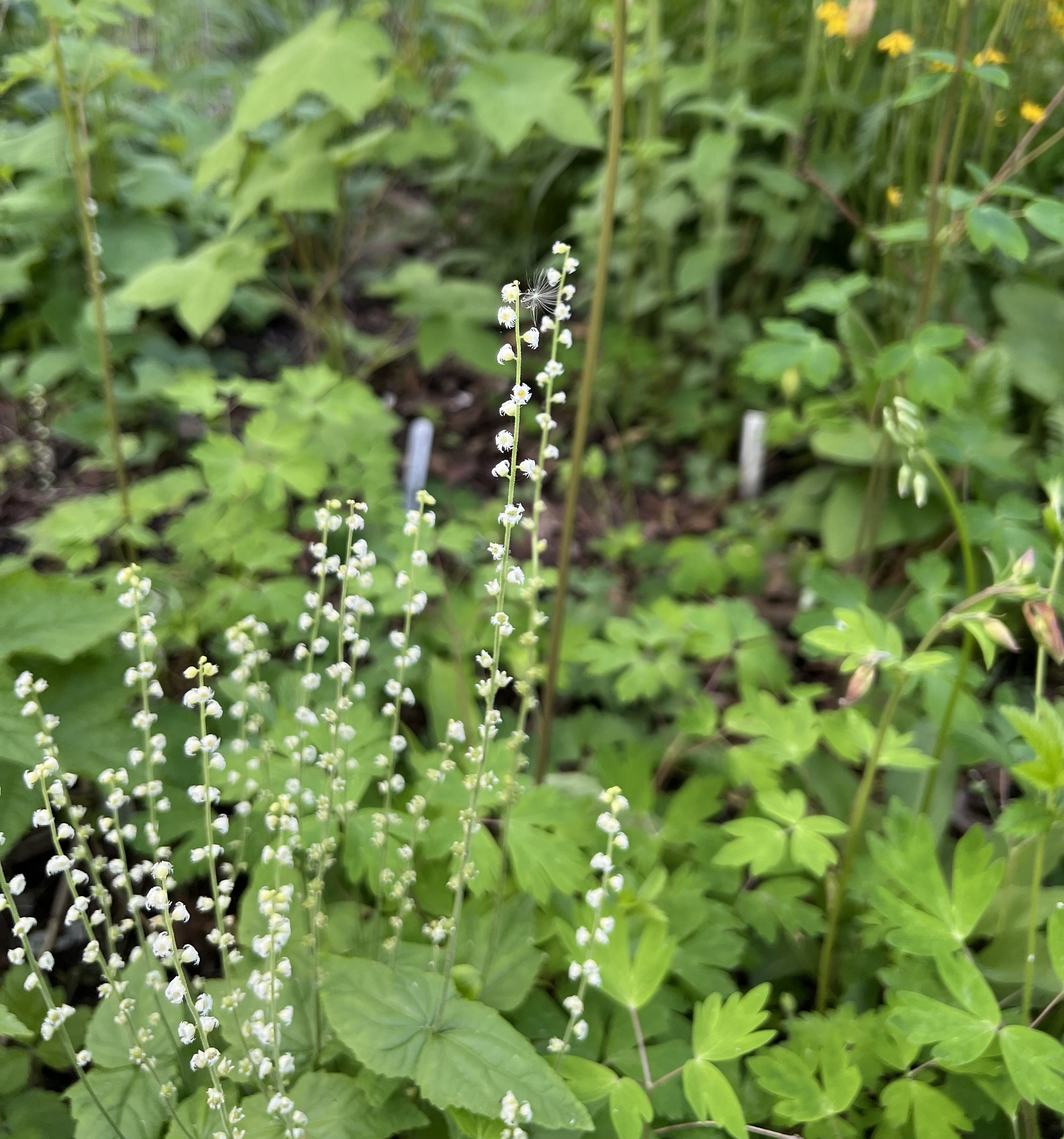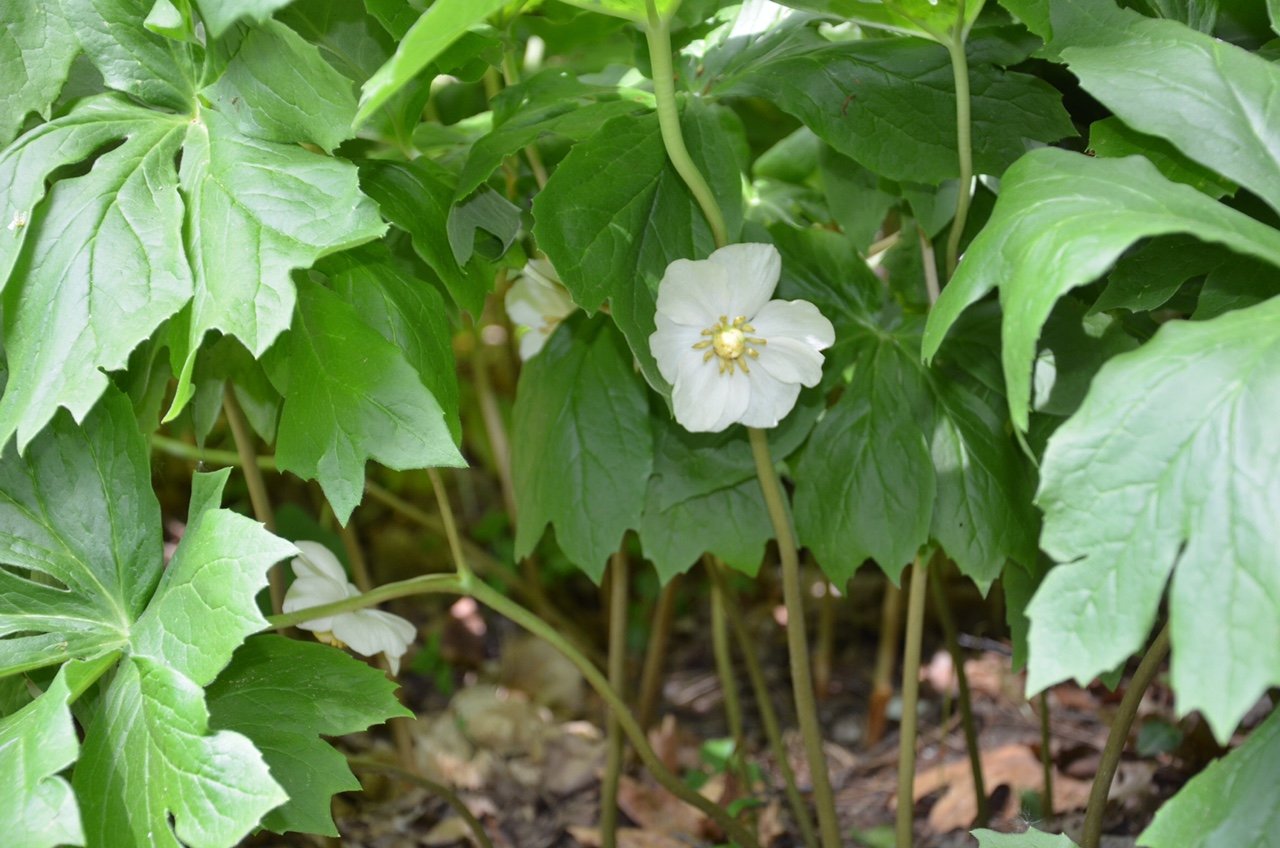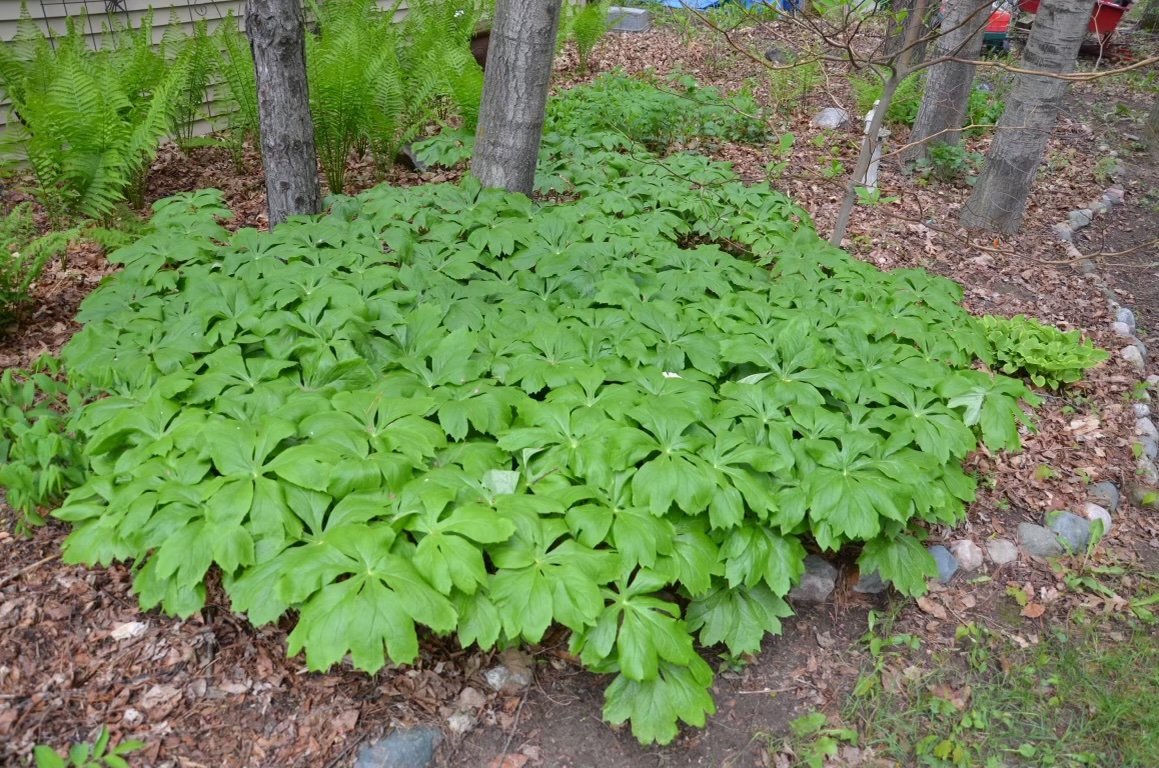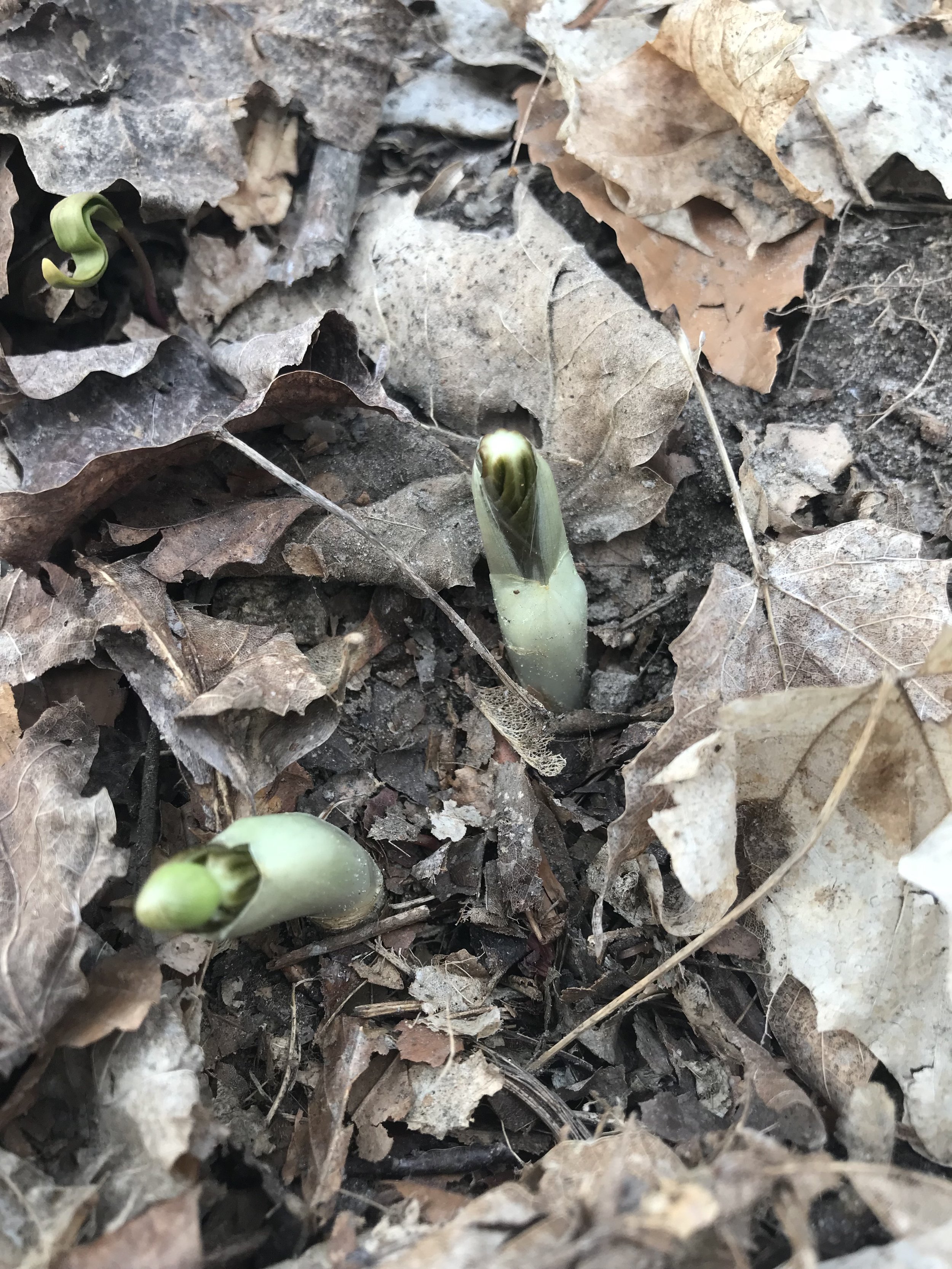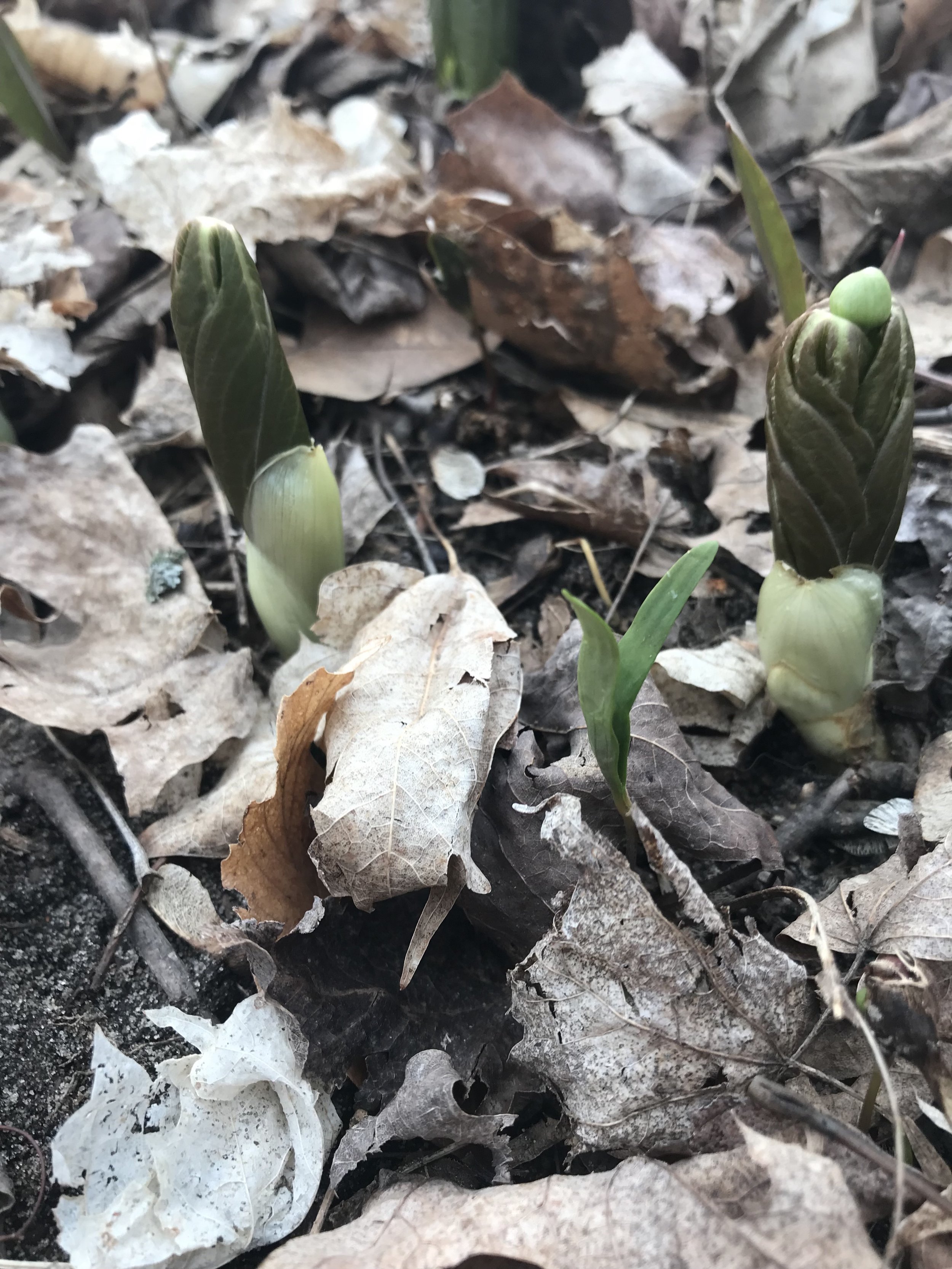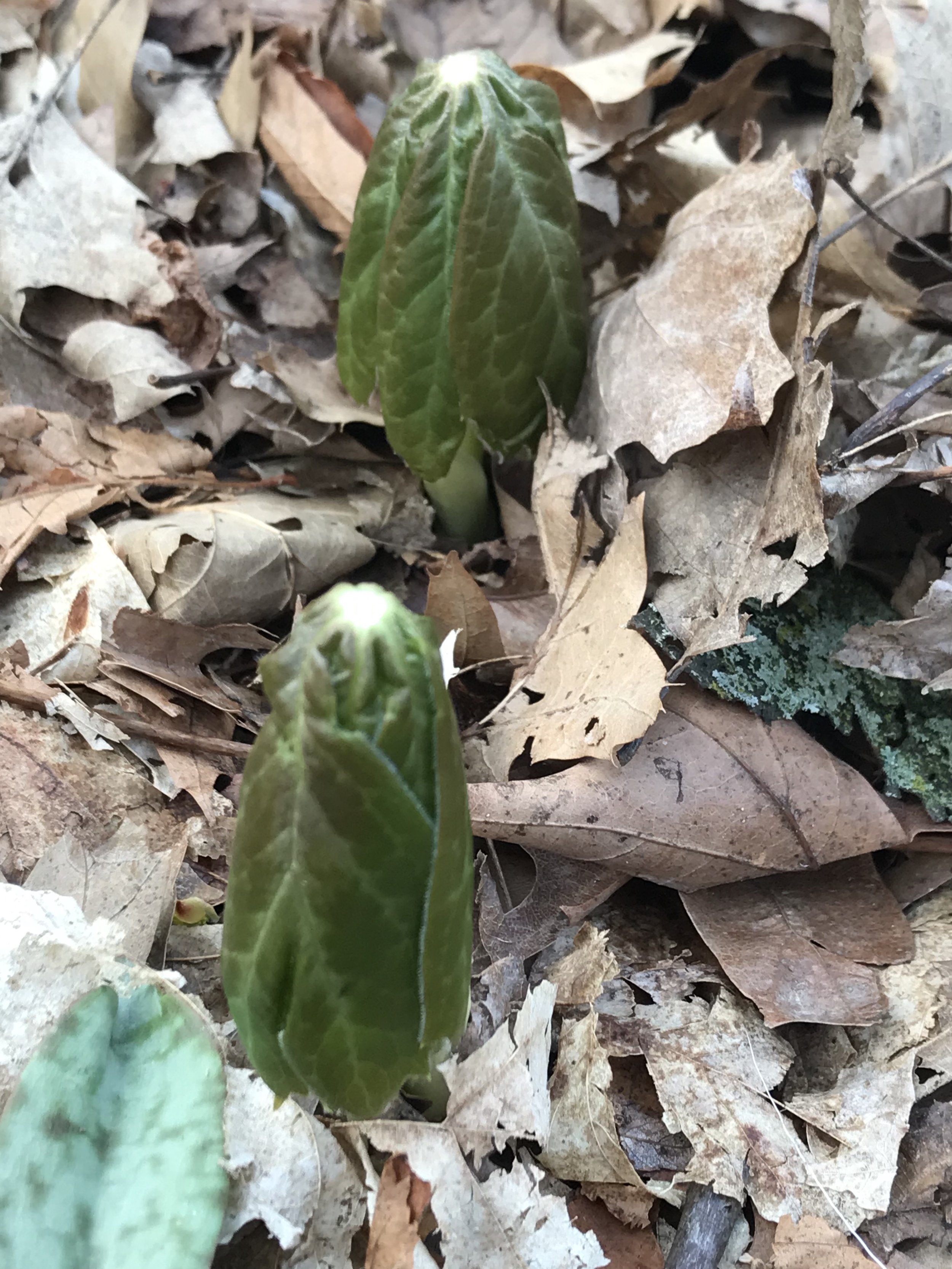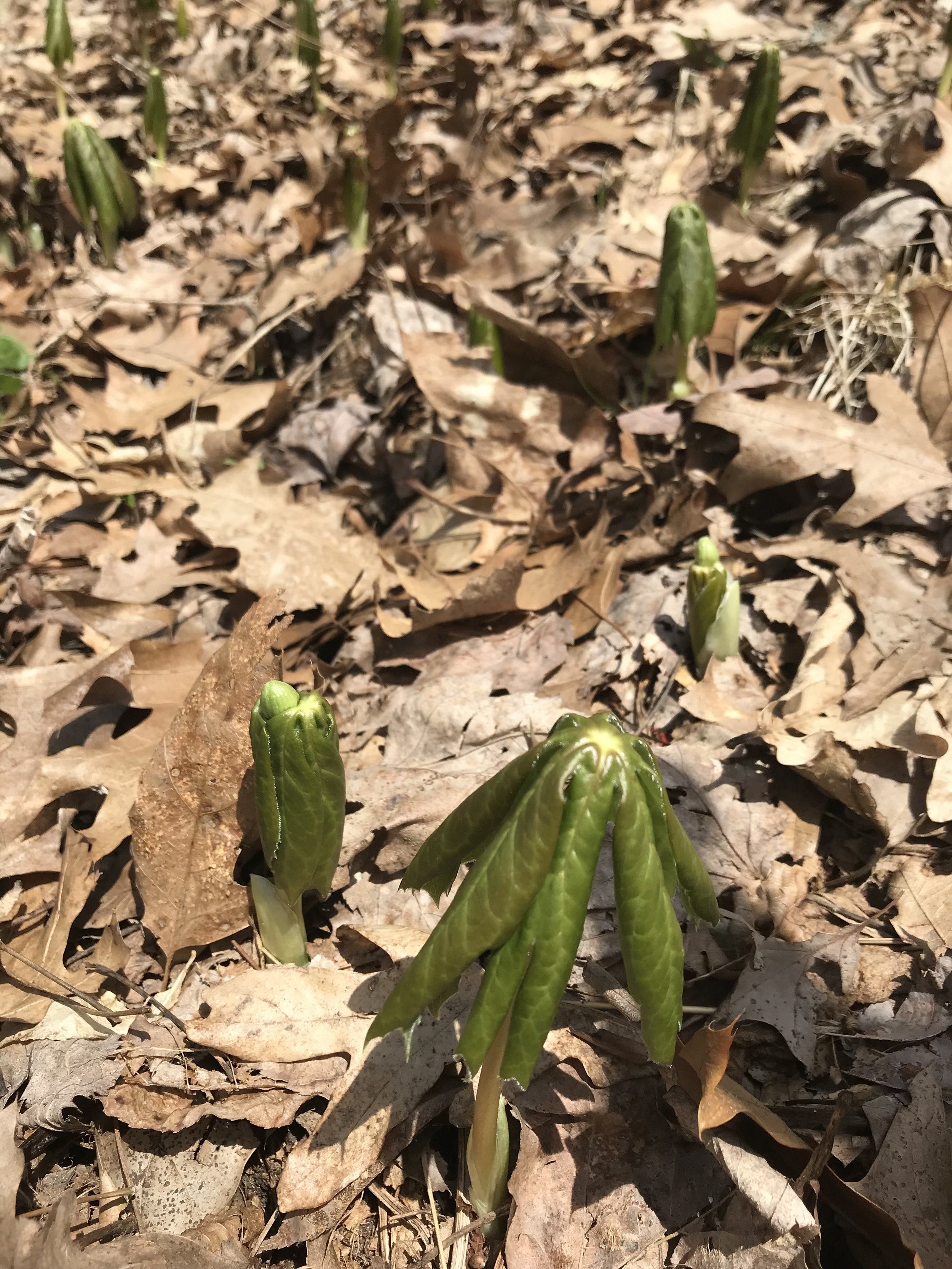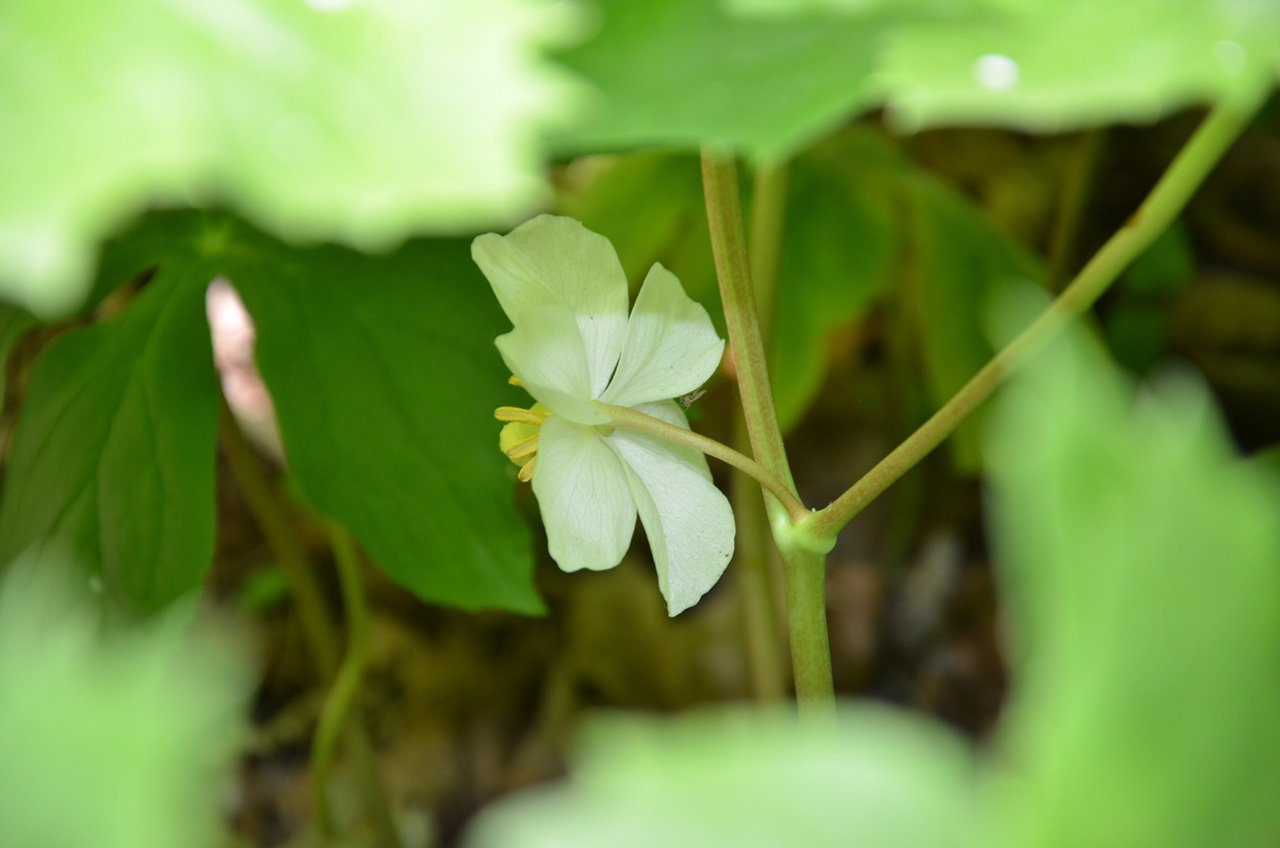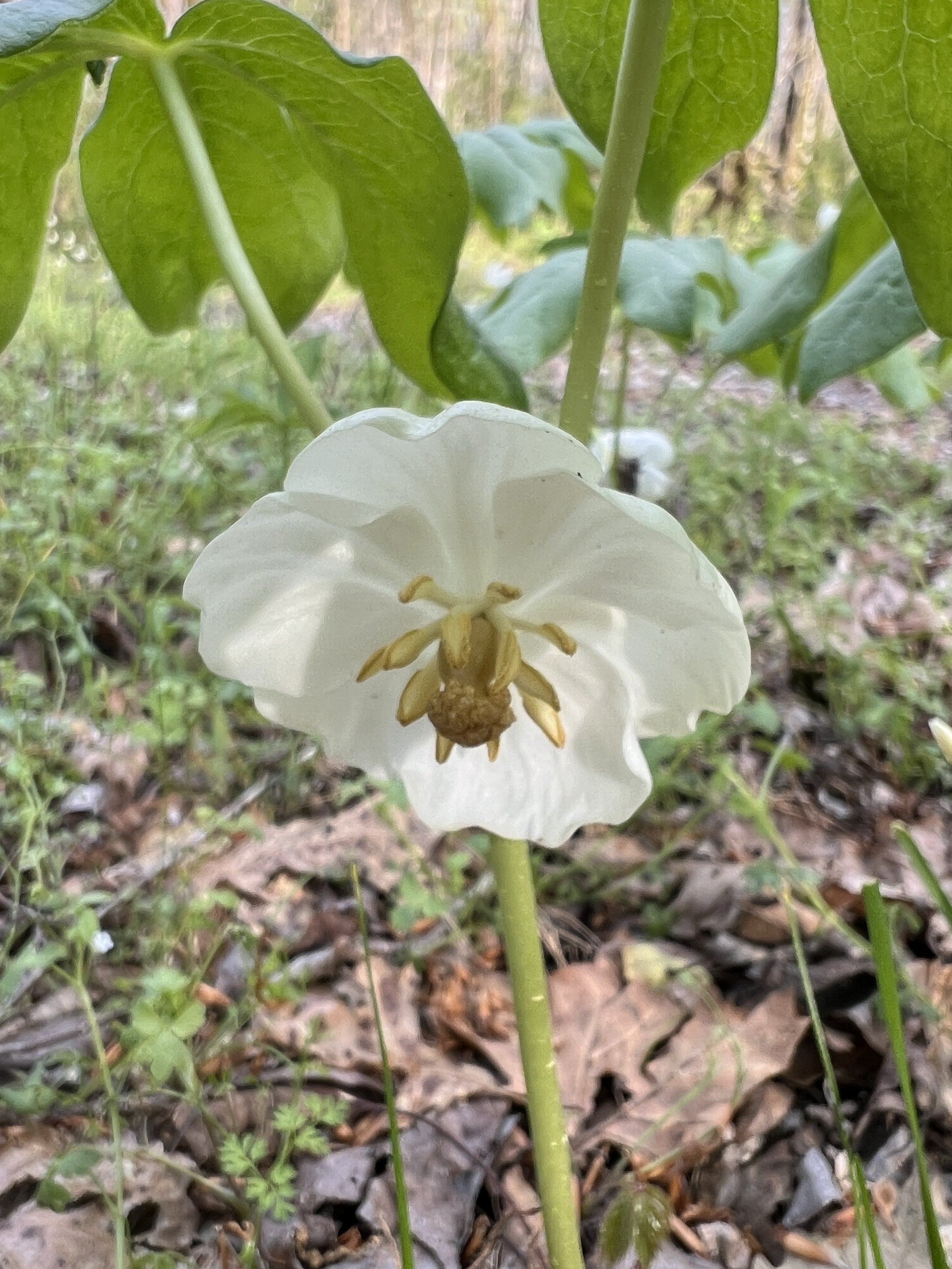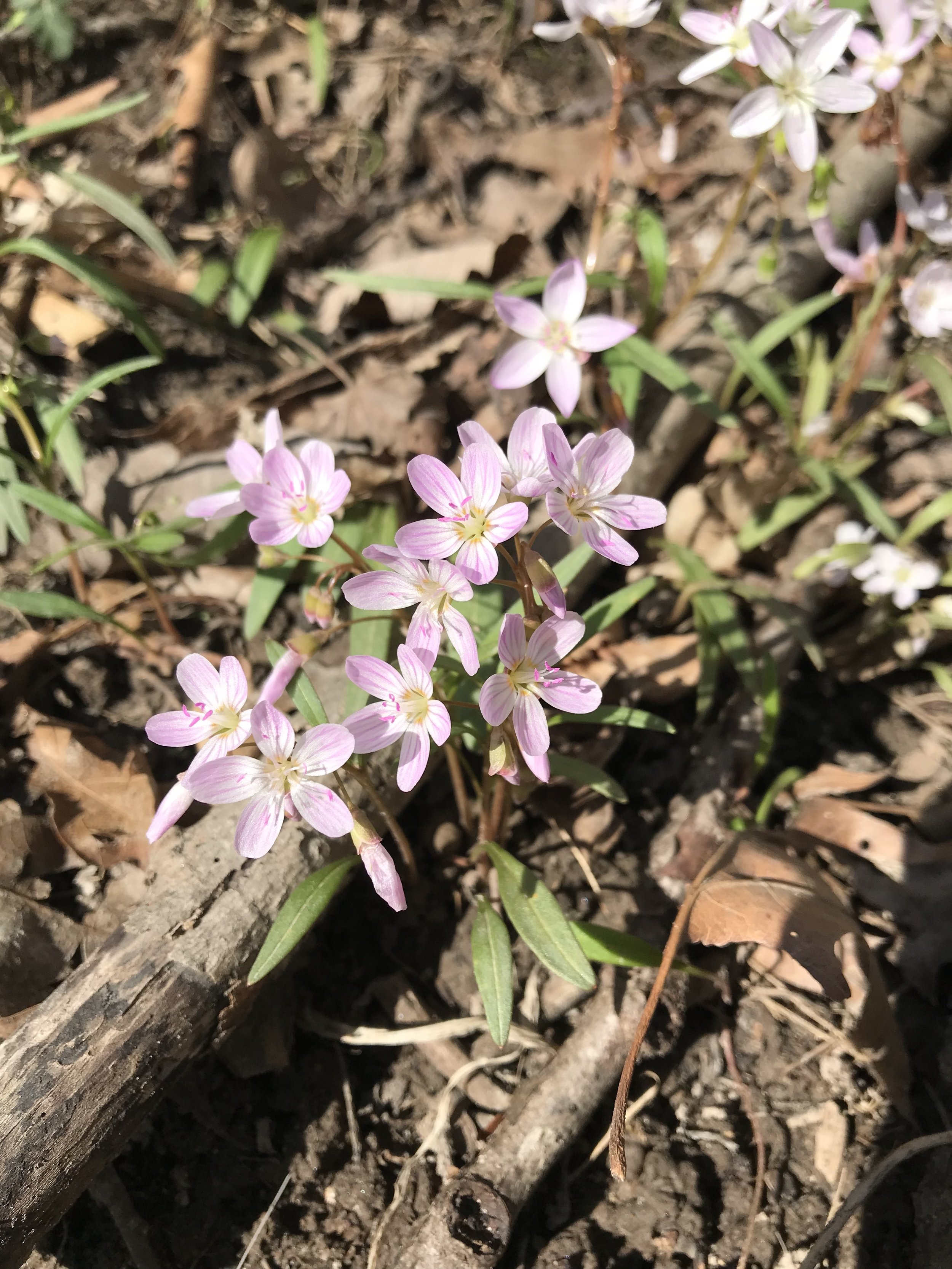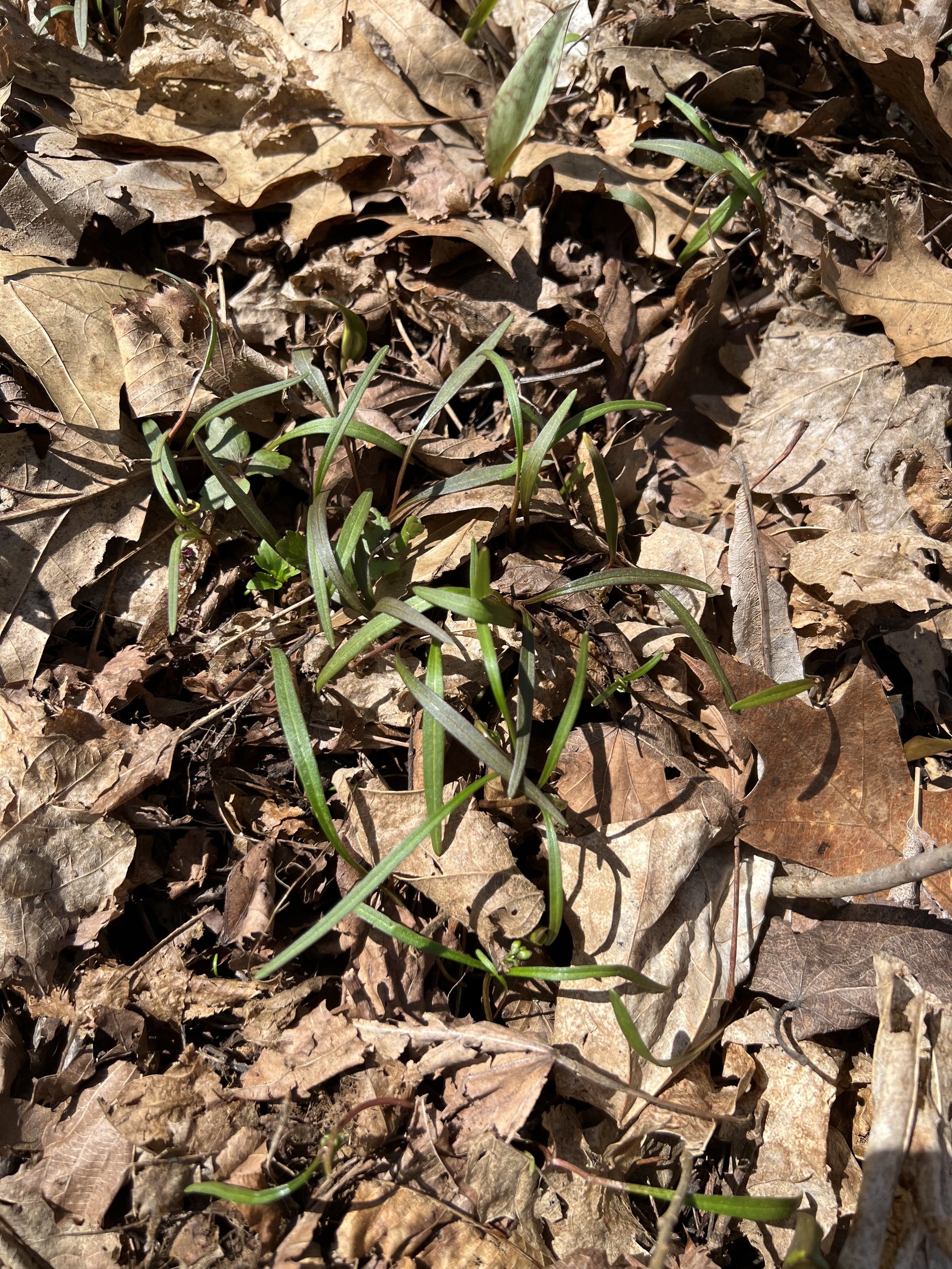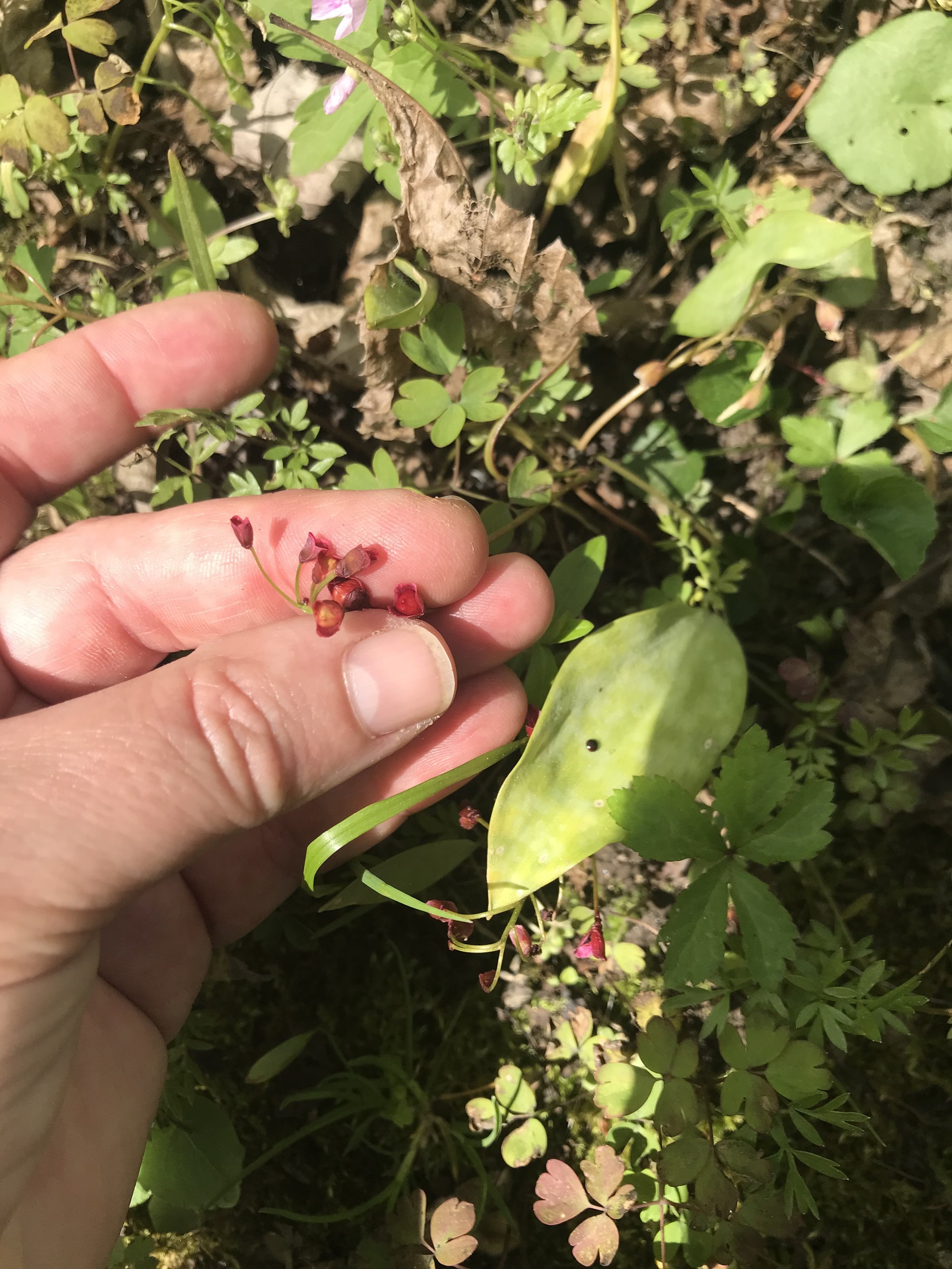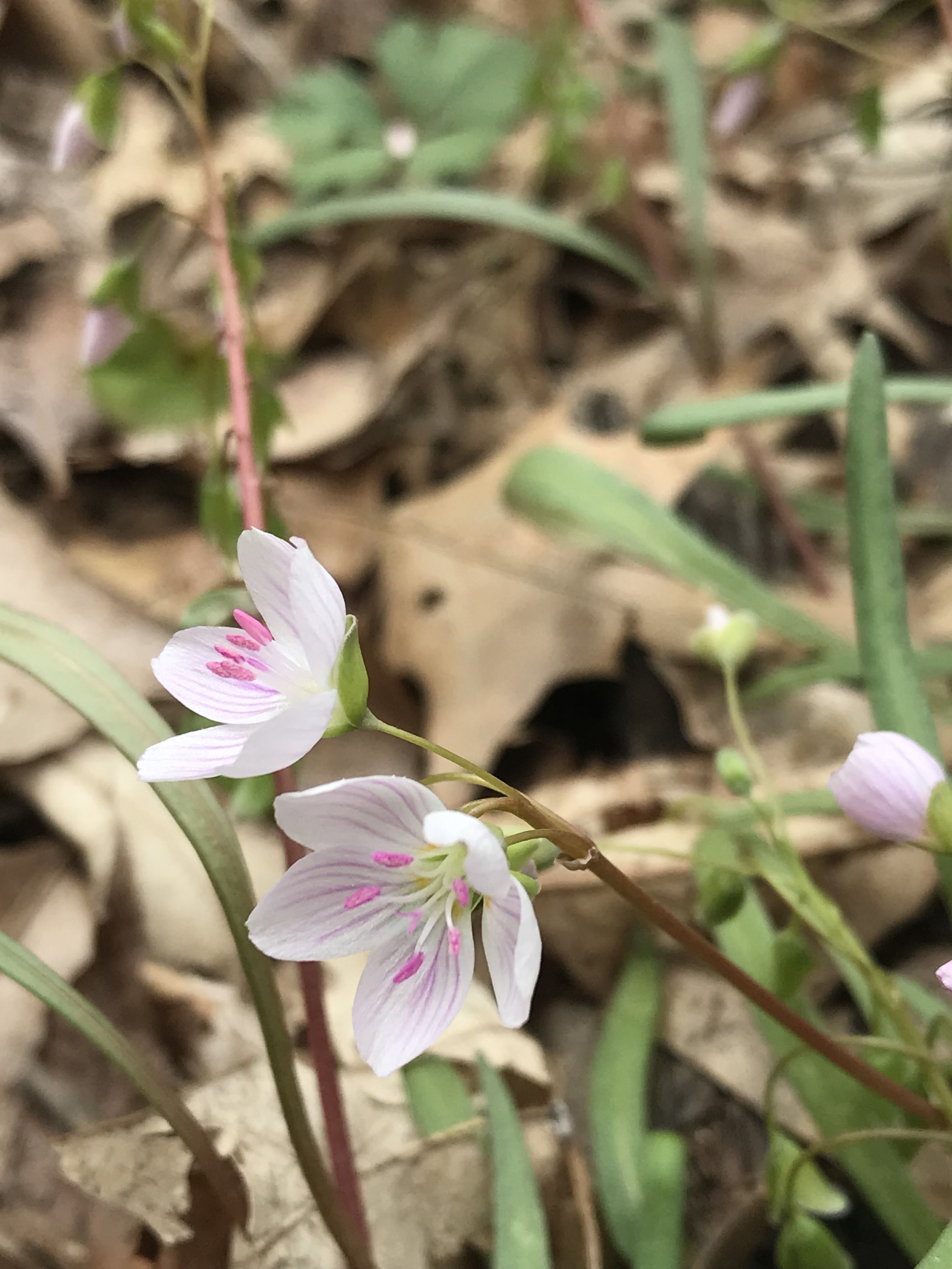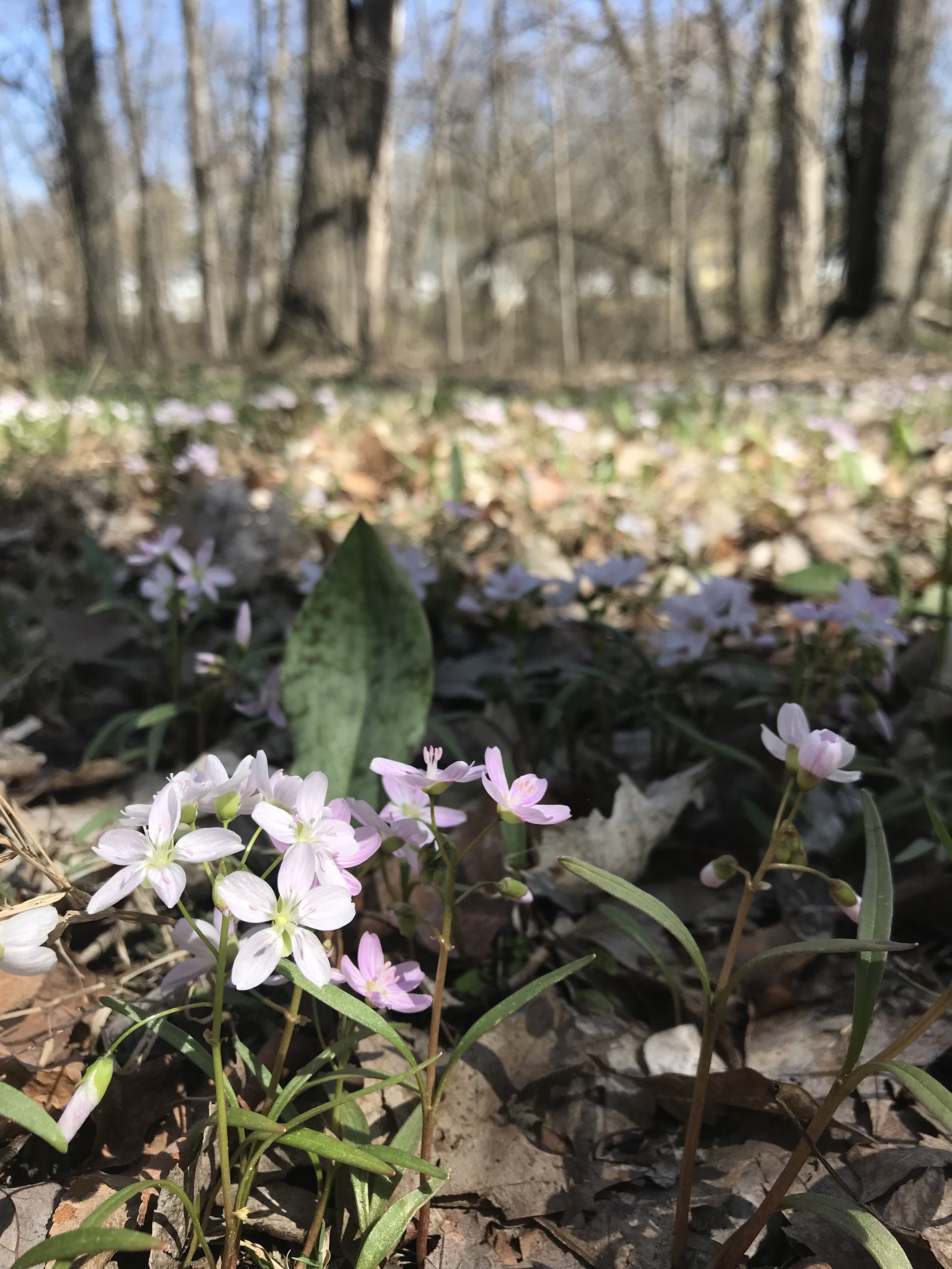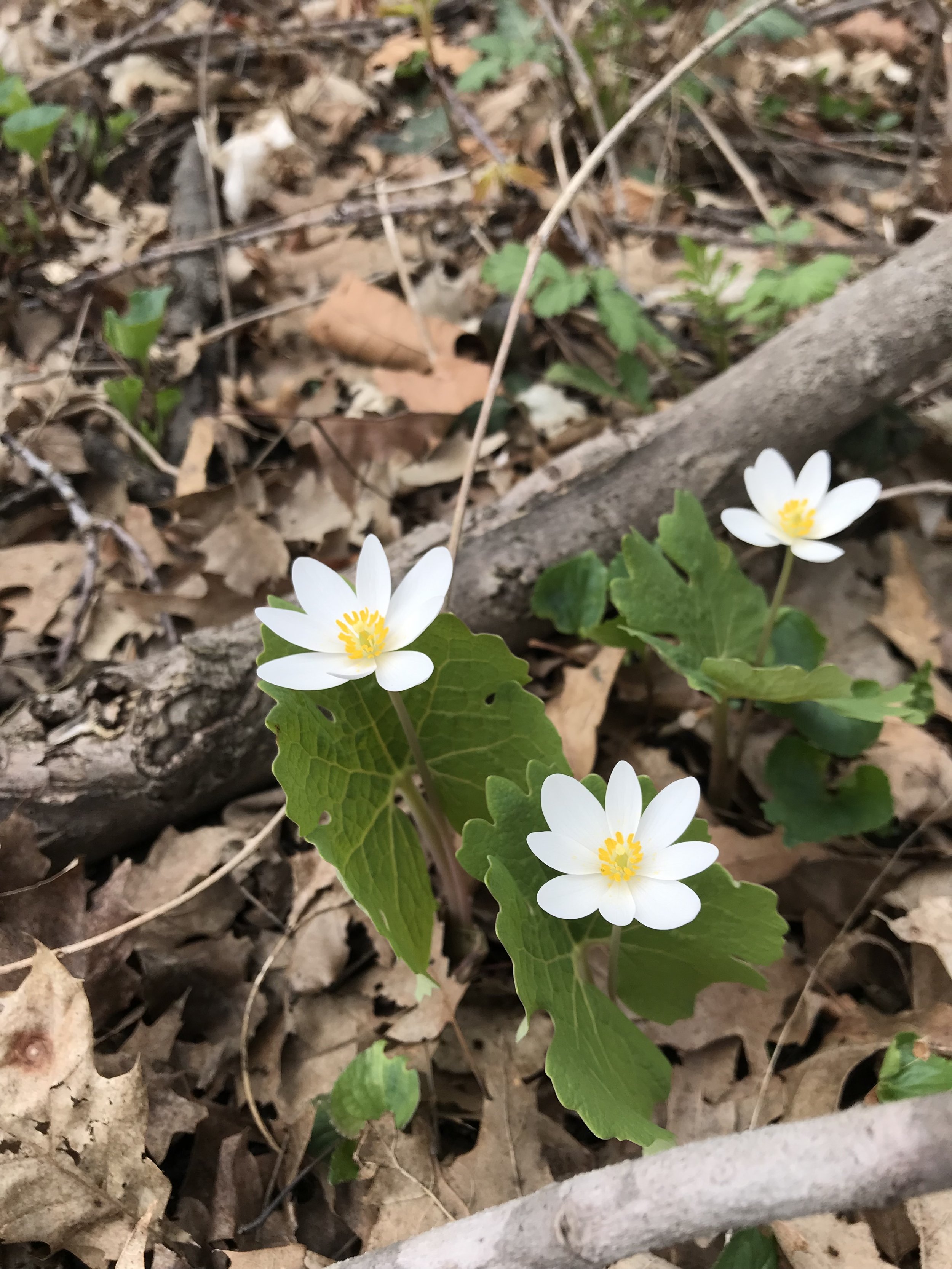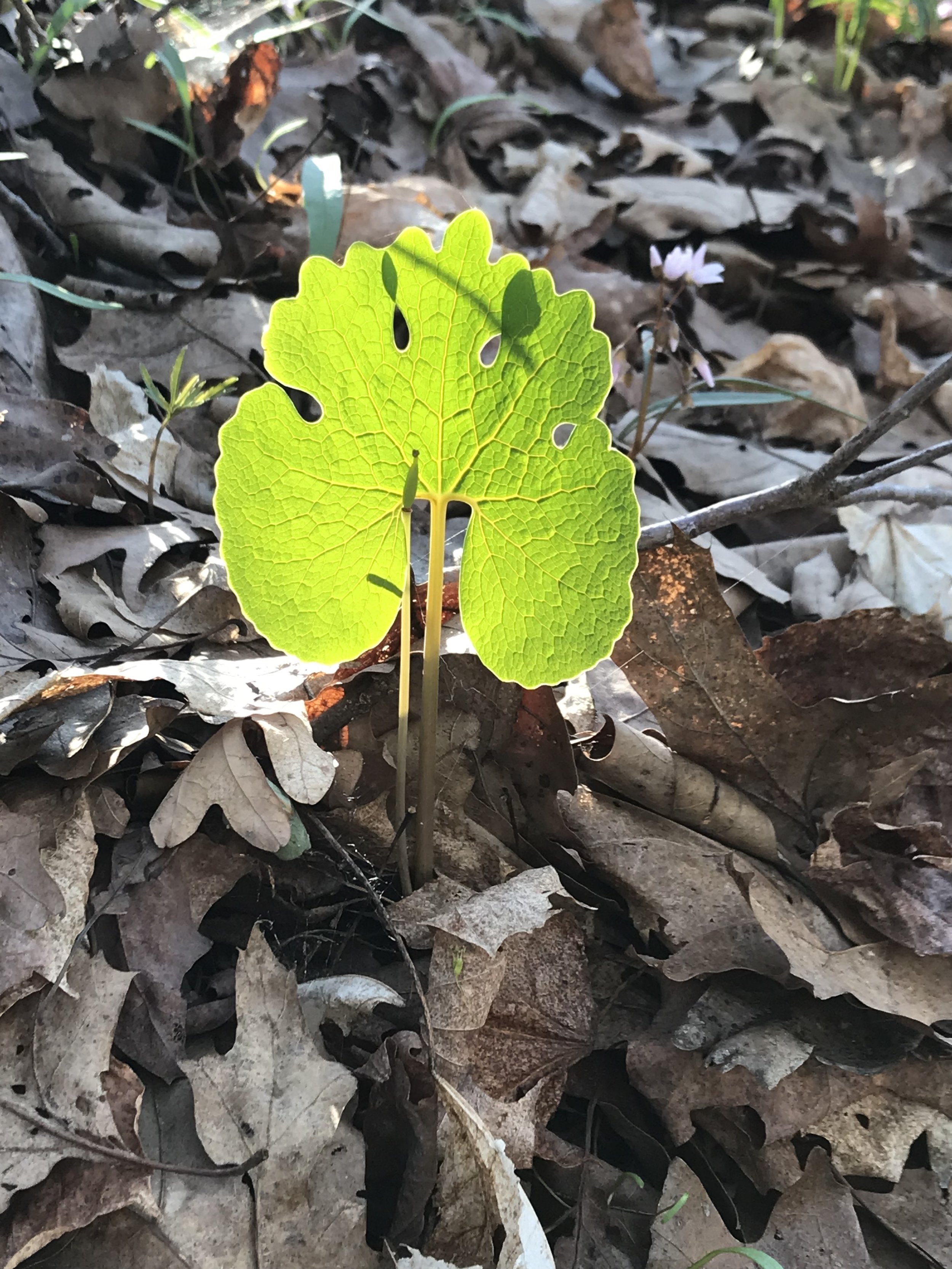Canada Mayflower (Maianthemum canadense)
Canada Mayflower is another plant in the Maianthemum genus. It is rather small topping out at 6-8 inches. Plants usually have 1-3 leaves. Plants with one leaf are sterile and those that are fertile have 2 or 3. The leaves are shiny, lime-green and have a deep vein down the center.
Flowers are in a small cluster atop a stalk that arises from the leaves. Flowers, usually in pairs, are small and white with four tepals that curve backward. Berries form after bees and flies visit the plant to collect pollen. There is no nectar. Berries are pink with red spots.
Canada Mayflower can spread by rhizome and form a ground cover if conditions are right. It prefers cool temperatures, so may be found most often in boreal habitat and in cool microhabitats all around the state.
Birds and small mammals eat the seeds, dispersing them.
Canada Mayflower (Maianthemum canadense)
Michigan Flora reference page for state distribution: Canada Mayflower
height: 6-8 inches
bloom time: May-June
soil: acidic, rich, medium-dry
sun: partial, shade
plant spacing: 6”
flower: white (berry: pink-red)
life cycle: perennial
family: Convallariaceae
Canada Mayflower is another plant in the Maianthemum genus. It is rather small topping out at 6-8 inches. Plants usually have 1-3 leaves. Plants with one leaf are sterile and those that are fertile have 2 or 3. The leaves are shiny, lime-green and have a deep vein down the center.
Flowers are in a small cluster atop a stalk that arises from the leaves. Flowers, usually in pairs, are small and white with four tepals that curve backward. Berries form after bees and flies visit the plant to collect pollen. There is no nectar. Berries are pink with red spots.
Canada Mayflower can spread by rhizome and form a ground cover if conditions are right. It prefers cool temperatures, so may be found most often in boreal habitat and in cool microhabitats all around the state.
Birds and small mammals eat the seeds, dispersing them.
Canada Mayflower (Maianthemum canadense)
Michigan Flora reference page for state distribution: Canada Mayflower
height: 6-8 inches
bloom time: May-June
soil: acidic, rich, medium-dry
sun: partial, shade
plant spacing: 6”
flower: white (berry: pink-red)
life cycle: perennial
family: Convallariaceae
Canada Mayflower is another plant in the Maianthemum genus. It is rather small topping out at 6-8 inches. Plants usually have 1-3 leaves. Plants with one leaf are sterile and those that are fertile have 2 or 3. The leaves are shiny, lime-green and have a deep vein down the center.
Flowers are in a small cluster atop a stalk that arises from the leaves. Flowers, usually in pairs, are small and white with four tepals that curve backward. Berries form after bees and flies visit the plant to collect pollen. There is no nectar. Berries are pink with red spots.
Canada Mayflower can spread by rhizome and form a ground cover if conditions are right. It prefers cool temperatures, so may be found most often in boreal habitat and in cool microhabitats all around the state.
Birds and small mammals eat the seeds, dispersing them.
Canada Mayflower (Maianthemum canadense)
Michigan Flora reference page for state distribution: Canada Mayflower
height: 6-8 inches
bloom time: May-June
soil: acidic, rich, medium-dry
sun: partial, shade
plant spacing: 6”
flower: white (berry: pink-red)
life cycle: perennial
family: Convallariaceae
Michigan puts this plant as well as the other Maianthemums in family Convallariaceae. Minnesota Wildflowers states that these plants were formerly in Liliaceae (Lily) but have now been reassigned to Ruscaceae. I have kept the Convallariacea assigned by Michigan Flora.
